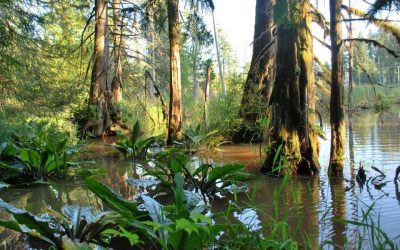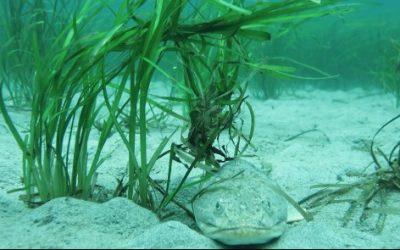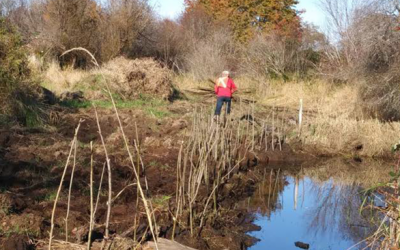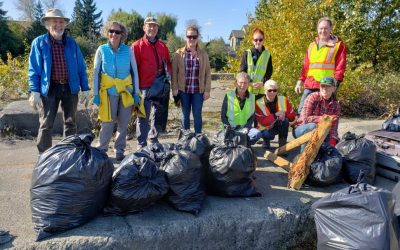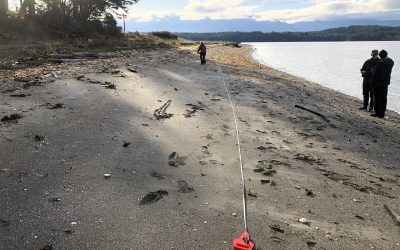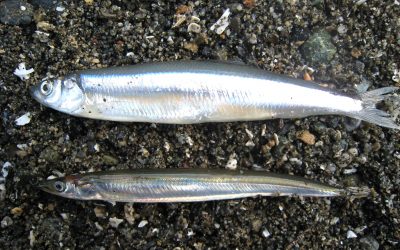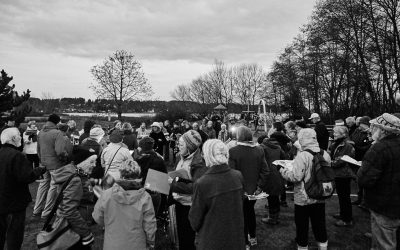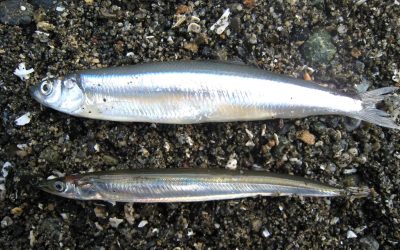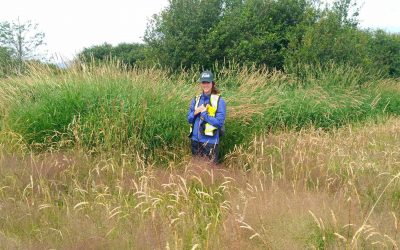Here at Project Watershed, we believe understanding your landscape or waterscape is the first step to becoming a steward of that landscape. So please join us on this experiential exploration of your watershed! As a bonus, each time you share a photo and comment on Facebook or Instagram, you will be entered into a raffle to win one of three $20.00 gift cards from the Co-op Peninsula.
Earth Week with Project Watershed
Spring has sprung and we are busy planning for Earth Week 2021! Earth Week is April 16 – 22, and we will be celebrating our love for this planet with a host of activities to support the health of our Lands and Waters.
Project Watershed Plans for Spring Eelgrass Transplants
Spring – a great time for planting in your garden and in the intertidal/subtidal zones. Once again Project Watershed will be working to restore eelgrass (Zostera marina) habitats by undertaking transplants in areas where the eelgrass is sparse or missing as determined by our coastal nearshore habitat mapping work.
Volunteers Needed for Stream Restoration at Mallard Creek!
Project Watershed needs volunteers to help us harvest willow cuttings, and then plant them alongside sections of Mallard Creek.
Kus-kus-sum/Hollyhock Flats Shoreline Cleanup 2020
Join us on September 26th as we participate in the Great Canadian Shoreline Cleanup. The cleanup will occur on the Kus-kus-sum property and the adjacent Hollyhock flats area. We will start at 10am and go til about noon.
Forage Fish Project Needs Volunteers
While many citizen science groups have begun conducting spring/summer forage fish spawning surveys, we still need a few more volunteers to cover some of the beaches in our area. Specifically we need volunteers for Quadra Island and Campbell River.
Project Watershed Continues Restoration Work Along Mallard Creek
Back in February, Project Watershed and volunteers from Aecon Water Infrastructure Inc. planted over 100 native species along a section of Mallard Creek.
Requesting Forage Fish Local Knowledge
Over the past few months, Project Watershed and citizen scientist volunteers have been working hard to identify forage fish spawning beaches in the Northern Salish Sea. Forage fish are a group of small schooling fish that are ecologically important to a variety of marine species such as Chinook and coho salmon, marine shore birds like the Rhinocerous Auklet and larger marine mammals such as orcas and humpback whales. In BC there are seven common species of forage fish: eulachon, Pacific sand lance, surf smelt, Pacific herring, Pacific sardine, capelin, and Northern anchovy.
9th Annual Estuary Carol Walk
The Estuary Carol Walk is a unique opportunity to enjoy our beloved Airpark and Riverway during winter season. Carollers share universal spiritual and secular musical traditions with birds, seals, salmon and other residents of our community. This December 8th event, supported by Project Watershed, is not a fundraiser; rather it is an invitation to include nature as part of your festive activities.
Wrapping Up 2019 Party at Bayside Cafe
Project Watershed invites everyone out to the Bayside Cafe on November 30 for the closing of our 2019 Keeping It Living Art Show and to celebrate all the activities and successes we have had this past year.”2019 has been quite a year for Project Watershed and our Kus-kus-sum initiative. We felt that a celebration amongst art that supports Kus-kus-sum was a great way to wrap it all up before Christmas.” said Kathy Haigh, Fundraising Director.
The event will run from 4 p.m. to 7 p.m. at #5 2760 Cliffe Ave in Courtenay.
Project Watershed Takes on Forage Fish Work
Project Watershed has recently secured funding, through the BC Salmon Restoration and Innovation Fund, to undertake forage fish research. Forage fish are small, schooling fish.
Mallard Creek Reed Canary Grass Removal Project
Reed Canary Grass (RCG) is a perennial cool season grass that can grow up to 2 meters tall and expands by creeping rhizomes, vegetative fragments and seeds. It out-competes other native vegetation due to its effective dispersal mechanisms and ability to shade out slower growing native species. In areas where it has been introduced it will quickly dominate from 50-100% of the site.


